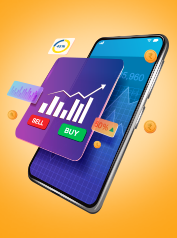
Table of Contents
GST Payments are the transactions of a firm's outstanding Goods and Services Tax (GST) sum that needs to be paid on a regular basis. It is one of the most critical requirements for a company to maintain compliance. The Indian government implemented the GST regime in 2017 to increase transparency and bring uniformity to the tax system.
According to the tax regulations, each authorised standard taxpayer is mandated to pay GST on the 20th of each month. It can be done by filing the GSTR-3B form. This form is also used to report the ITC (Income Tax Credit) of the company. In addition to this, the present GST return filing procedure necessitates the submission of one GSTR-1 form each month. This procedure is followed to report the company’s sales. Furthermore, you may claim the tax return by filling up the ITR (Income Tax Return) application form.
As a taxpayer, you must be well informed about the different types of GST payments that need to be made under this tax regime. Here are the details about the same.
IGST (Integrated Goods and Services Tax): When products and services are transferred across states, IGST is imposed by the central government.
CGST (Central Goods and Services Tax): CGST incorporates all taxes that were previously levied as centralised indirect taxes. They are assessed by the central government for the transportation of goods and services within the state.
SGST (State Goods and Services Tax): SGST is a form of tax levied by the state government on intrastate supplies of goods and services.
To begin, you must ascertain the HSN (Harmonised System of Nomenclature) or SAC (Services Accounting Code) code of the products and services being taxed. GST on services is charged in five slabs: 0%, 5%, 12%, 18%, and 28%. Identifying the code will assist you in assessing the percentage of the imposed tax.
Here’s a step-by-step guide that will assist you in calculating your GST payments.
First, to determine the aggregate GST payments that a company owes to the appropriate governmental entities, the Input Tax Credit (ITC) needs to be subtracted from the external tax obligations.
Thereafter, in order to calculate the net amount that the business owes, the Tax Deducted at Source (TDS) will be removed from the Tax Collected at Source (TCS).
As the final step, interest and late fines (if any) will be added to the amount to get the final value.
Aside from this, you may also use the GST calculator available on our site to calculate your GST payments easily.
Here is the list of dealers who are mandated to make GST challan payments.
All GST registered dealers are mandated to pay GST (if any tax liability exists).
Registered dealers are required to pay tax under the Reverse Charge Mechanism (RCM).
Operators, aggregators, and merchants in the e-commerce space must pay and collect TCS (Tax Collection at Source).
TDS must be deducted by dealers as and when found appropriate.\
In order to make hassle-free and successful GST payments, you must be informed about the available transaction options. Here are the details about the same.
Payment Using the Credit Ledger: The dealers may redeem the ITC credit that is promptly acquired for the purpose of paying the GST. However, ITC cannot be used to pay the necessary interest, relevant penalties, or outstanding late fees.
Payment Using the Cash Ledger: You can make GST payments online and offline. For both of these payment options, the GST payment challan must be generated on the GST Portal. Additionally, dealers are required to make GST payment online if their tax amount exceeds ₹10,000.
Here are the steps to follow to pay GST online.
Step 1: Visit the GST portal and login to your account.
Step 2: Navigate to the ‘Services’ section and choose the ‘Payments’ option.
Step 3: Next, click on ‘Create Challan’ and enter your GSTIN (Goods and Services Tax Identification Number).
Step 4: Enter the amount that needs to be paid and select the payment mode among given alternatives.
Step 5: Click on ‘Generate Challan’ and provide the OTP received on your registered mobile number.
Step 6: Once the challan is generated, complete the GST payment.
Step 7: After your successful payment, you will be able to download your GST challan.
You may visit the nearest branch of your bank and make GST payments through NEFT, RTGS, cash, cheque, or demand draft (DD). However, you are required to generate the challan first by visiting the GST portal. Through the offline mode, you may only make the payment of tax up to ₹10,000. This medium is also known as Over The Counter (OTC) payment option.
Being a liable taxpayer, you must be well informed about the essential GST payment forms to avoid any kind of difficulty. Here’s a closer look at the details about the same.
Type of Form |
Purpose |
|---|---|
Form GST PMT-01 |
Maintains the electronic tax liability register |
Form GST PMT-02 |
Maintains the electronic credit ledger |
Form GST PMT-03 |
Includes an authorised officer's order disapproving the application for repayment of the amount in the electronic credit ledger |
Form GST PMT-04 |
Can be used to communicate any discrepancy in the electronic credit ledger |
Form GST PMT-05 |
Maintains the electronic cash ledger |
Form GST PMT-06 |
Includes challan for payment of tax, interest, fines, or other charges |
Form GST PMT-07 |
|
A late interest penalty of 18% must be paid if your GST payment is delayed or unpaid. In addition to this, you are required to pay late charges which can be more than ₹10,000 or 10% of your overall tax amount.
The GST refund process enables registered taxpayers to claim an excessive amount if they paid more than their GST obligations. You can make a claim refund under GST after filing a refund application with the required information to the GST portal.
Here are the situations under which you can claim your GST refunds.
Taxes are overpaid due to some mistakes
ITC buildup as a result of tax-free or nil-rated production
Dealer who exports (including presumed export) products or services in exchange for a rebate or refund
VAT refunds on purchases made by embassies or UN organisations
Tax refund for foreign visitors
Preliminary certification completion
Let’s understand this with an example.
You are required to make the GST payment of ₹8 Lakhs in the month of August. But due to some calculation mistakes, you ended up paying ₹10 Lakhs. Now that you have paid ₹2 Lakhs more than what you owed, you may claim a return when you fulfil your GST obligations for the upcoming tax period.
Within two years after the date on which the excess payment was made, the GST-registered merchant may submit a claim for a refund. The reimbursement application must be submitted in Form RFD 01 and certified by a chartered accountant. However, relevant dates are different in each situation. Below are the details about the same.
Reason for Claiming Refund |
Relevant Date |
|---|---|
Excess payment of GST |
Date of payment |
Export/deemed export of goods and services |
Date of dispatch/loading/border crossing |
ITC builds up as output is tax-free or zero-rated |
Last day of the fiscal year to which the credit pertains |
Completion of the preliminary evaluation |
Date of the tax adjustment |
Over the course of this article, several important aspects of GST payment have been discussed including payment modes, GST refund, among other important factors. According to the GST payment regulations, if a person files a GST Monthly Return without paying the due tax, the return is considered null. Hence, it is important to make GST payments in order to receive GST refunds.
According to the tax regulations, each authorised standard taxpayer is mandated to pay GST on the 20th of each month by filing the GSTR-3B form.
Here are the steps to follow.
Visit the GST portal.
Navigate to the ‘Services’ tab.
Click on ‘Payments’ and choose the ‘Track Payment Status’ alternative.
Enter your CPIN (Challan).
Provide the captcha and click on the ‘Track Status’ option.
The status will be displayed on the screen.
Yes, you can make your GST payments using your debit or credit cards through online mode.
Academy by Bajaj Markets












